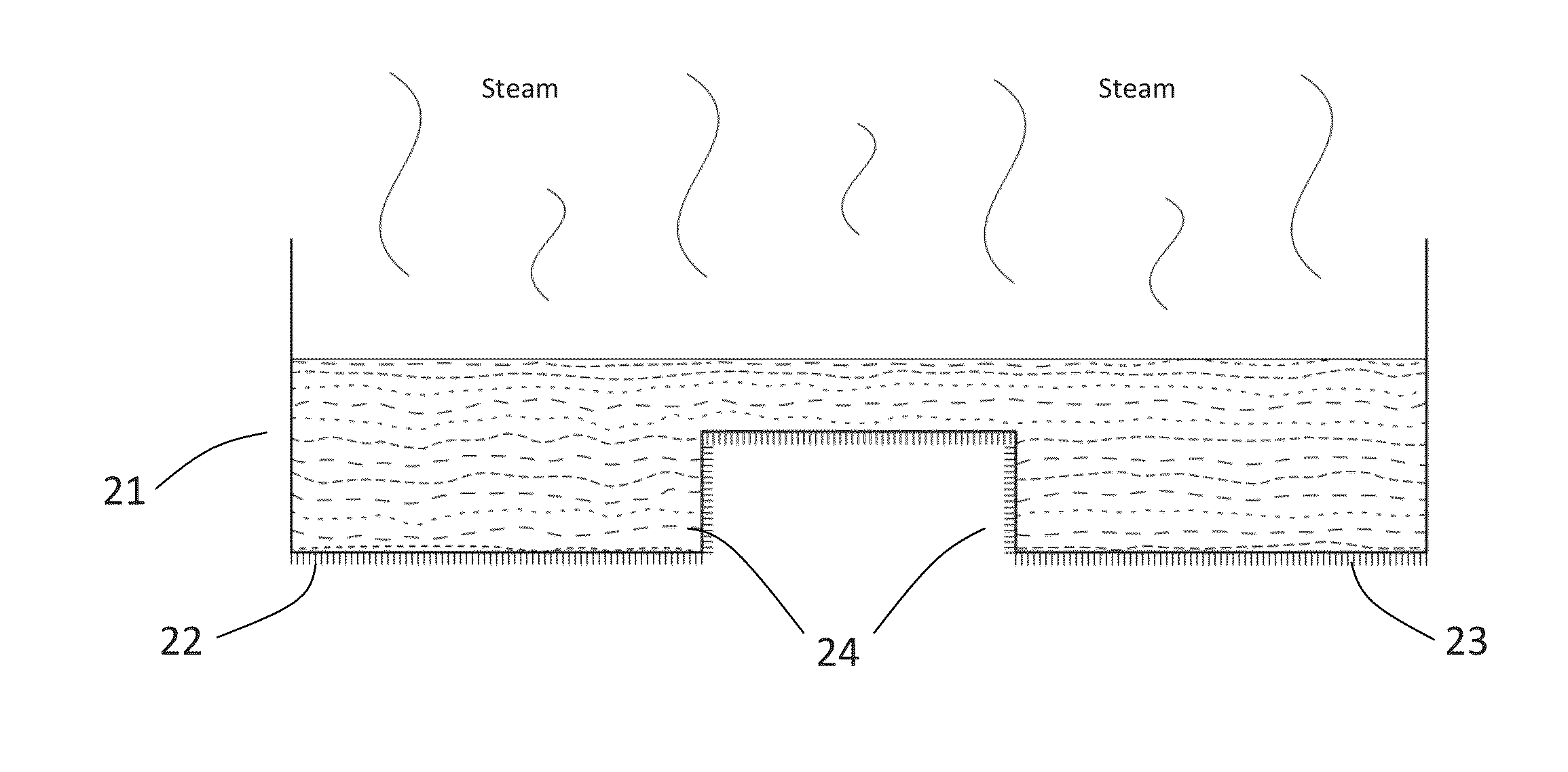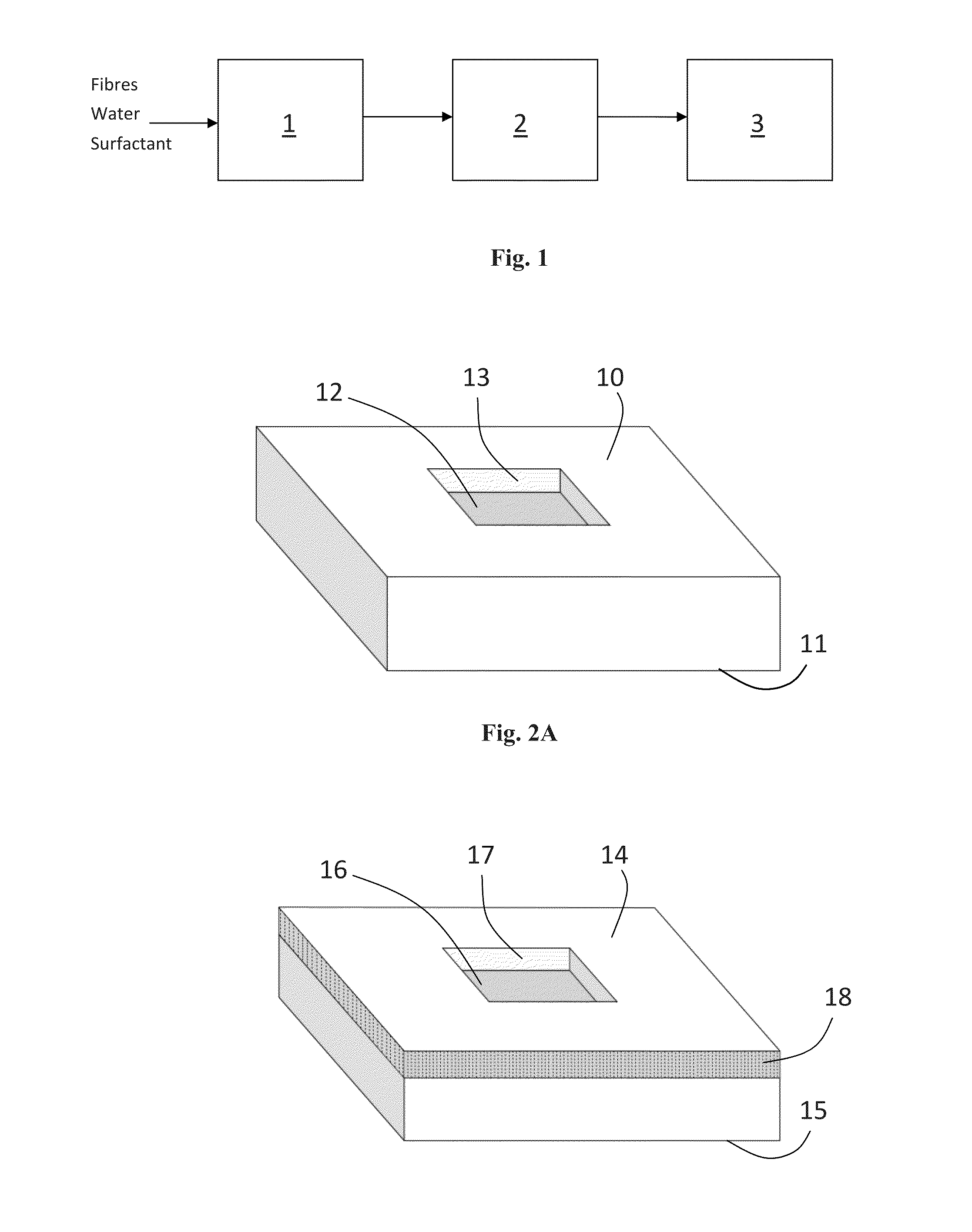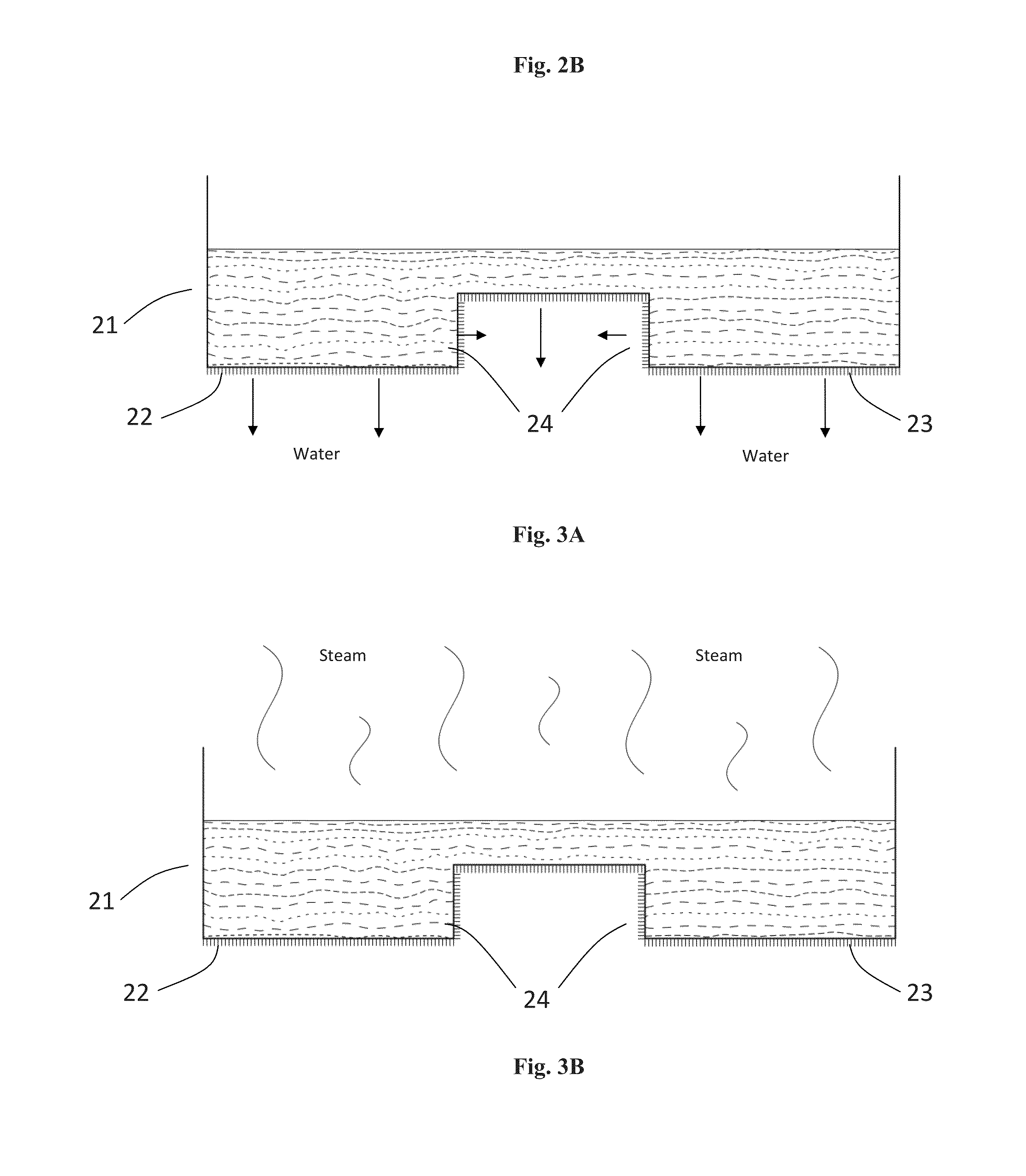Method of forming a fibrous product
a technology of fibrous products and fibers, which is applied in the field of forming lightweight fibrous products, can solve the problems of unprotected parts of goods, less commercially attractive production of expanded polystyrene than potential alternatives, and deflated goods, so as to improve the bonding of fibres, reduce the cost of production, and improve the effect of bonding
- Summary
- Abstract
- Description
- Claims
- Application Information
AI Technical Summary
Benefits of technology
Problems solved by technology
Method used
Image
Examples
example 1
[0091]Into 8-10 litres of water was mixed 250 g of unground long fibre cellulose to form a suspension. Into the suspension was added 2 g / l of sodium dodecyl sulphate (SDS) and the suspension was foamed. A first layer of the foamed suspension was poured into a mould with dimensions 500 mm×500 mm. The first layer of the foamed suspension was provided with a blue surface by impregnation of the foam with a dye by suction (15 s). A second layer of the foamed suspension was poured into the mould. After the addition of the second foam, aearation was carried out for 10 seconds. The mould was then placed into a fan-assisted oven at 90° C. for 15-20 hours overnight and the mould was opened the following morning. The moulded fibrous product was then cut to size.
PUM
| Property | Measurement | Unit |
|---|---|---|
| density | aaaaa | aaaaa |
| length | aaaaa | aaaaa |
| thickness | aaaaa | aaaaa |
Abstract
Description
Claims
Application Information
 Login to View More
Login to View More - R&D
- Intellectual Property
- Life Sciences
- Materials
- Tech Scout
- Unparalleled Data Quality
- Higher Quality Content
- 60% Fewer Hallucinations
Browse by: Latest US Patents, China's latest patents, Technical Efficacy Thesaurus, Application Domain, Technology Topic, Popular Technical Reports.
© 2025 PatSnap. All rights reserved.Legal|Privacy policy|Modern Slavery Act Transparency Statement|Sitemap|About US| Contact US: help@patsnap.com



